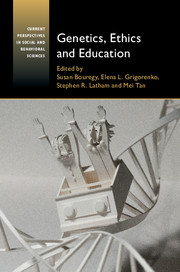40 results
A comprehensive diagnostic of liquid sheet targets for laser ion acceleration
-
- Journal:
- High Power Laser Science and Engineering / Accepted manuscript
- Published online by Cambridge University Press:
- 05 March 2024, pp. 1-17
-
- Article
-
- You have access
- Open access
- Export citation
Blending style and theme: grammar and rhetoric in Han Yu's “Miscellaneous Discourses”
-
- Journal:
- Bulletin of the School of Oriental and African Studies / Volume 86 / Issue 3 / October 2023
- Published online by Cambridge University Press:
- 11 December 2023, pp. 523-544
- Print publication:
- October 2023
-
- Article
- Export citation
Synchronous post-acceleration of laser-driven protons in helical coil targets by controlling the current dispersion
-
- Journal:
- High Power Laser Science and Engineering / Volume 11 / 2023
- Published online by Cambridge University Press:
- 18 April 2023, e51
-
- Article
-
- You have access
- Open access
- HTML
- Export citation
Asian-Pacific perspective on the psychological well-being of healthcare workers during the evolution of the COVID-19 pandemic
-
- Journal:
- BJPsych Open / Volume 6 / Issue 6 / November 2020
- Published online by Cambridge University Press:
- 08 October 2020, e116
-
- Article
-
- You have access
- Open access
- HTML
- Export citation
9 - Genetics/Genomics and Intelligence
- from Part III - Theories on the Development of Intelligence
-
-
- Book:
- Human Intelligence
- Print publication:
- 08 August 2019, pp 227-252
-
- Chapter
- Export citation
Underground nuclear astrophysics experiment JUNA in China
-
- Journal:
- Proceedings of the International Astronomical Union / Volume 15 / Issue S350 / April 2019
- Published online by Cambridge University Press:
- 12 October 2020, pp. 313-320
- Print publication:
- April 2019
-
- Article
-
- You have access
- Export citation
Relationships between stress, demographics and dietary intake behaviours among low-income pregnant women with overweight or obesity
-
- Journal:
- Public Health Nutrition / Volume 22 / Issue 6 / April 2019
- Published online by Cambridge University Press:
- 09 January 2019, pp. 1066-1074
-
- Article
-
- You have access
- HTML
- Export citation
Concurrent benzodiazepine use in older adults treated with antidepressants in Asia
-
- Journal:
- International Psychogeriatrics / Volume 31 / Issue 5 / May 2019
- Published online by Cambridge University Press:
- 07 December 2017, pp. 685-691
-
- Article
- Export citation
Index
-
- Book:
- Genetics, Ethics and Education
- Published online:
- 06 October 2017
- Print publication:
- 05 October 2017, pp 394-404
-
- Chapter
- Export citation
1 - What Is Heritability and Why Does It Matter?
-
-
- Book:
- Genetics, Ethics and Education
- Published online:
- 06 October 2017
- Print publication:
- 05 October 2017, pp 15-44
-
- Chapter
- Export citation
Tables
-
- Book:
- Genetics, Ethics and Education
- Published online:
- 06 October 2017
- Print publication:
- 05 October 2017, pp x-x
-
- Chapter
- Export citation
Copyright page
-
- Book:
- Genetics, Ethics and Education
- Published online:
- 06 October 2017
- Print publication:
- 05 October 2017, pp vi-vi
-
- Chapter
- Export citation
Abbreviations
-
- Book:
- Genetics, Ethics and Education
- Published online:
- 06 October 2017
- Print publication:
- 05 October 2017, pp xiii-xvi
-
- Chapter
- Export citation
Contents
-
- Book:
- Genetics, Ethics and Education
- Published online:
- 06 October 2017
- Print publication:
- 05 October 2017, pp vii-viii
-
- Chapter
- Export citation
Figures
-
- Book:
- Genetics, Ethics and Education
- Published online:
- 06 October 2017
- Print publication:
- 05 October 2017, pp ix-ix
-
- Chapter
- Export citation
Contributors
-
- Book:
- Genetics, Ethics and Education
- Published online:
- 06 October 2017
- Print publication:
- 05 October 2017, pp xi-xii
-
- Chapter
- Export citation
Introduction
-
-
- Book:
- Genetics, Ethics and Education
- Published online:
- 06 October 2017
- Print publication:
- 05 October 2017, pp 1-14
-
- Chapter
- Export citation

Genetics, Ethics and Education
-
- Published online:
- 06 October 2017
- Print publication:
- 05 October 2017
13 - Biomedicine, Creativity, and the Story of AIDS
- from Part III - Creativity in the Sciences
-
-
- Book:
- The Cambridge Handbook of Creativity across Domains
- Published online:
- 15 September 2017
- Print publication:
- 28 September 2017, pp 226-246
-
- Chapter
- Export citation
Faster eating rates are associated with higher energy intakes during an ad libitum meal, higher BMI and greater adiposity among 4·5-year-old children: results from the Growing Up in Singapore Towards Healthy Outcomes (GUSTO) cohort
-
- Journal:
- British Journal of Nutrition / Volume 117 / Issue 7 / 14 April 2017
- Published online by Cambridge University Press:
- 02 May 2017, pp. 1042-1051
- Print publication:
- 14 April 2017
-
- Article
-
- You have access
- HTML
- Export citation



